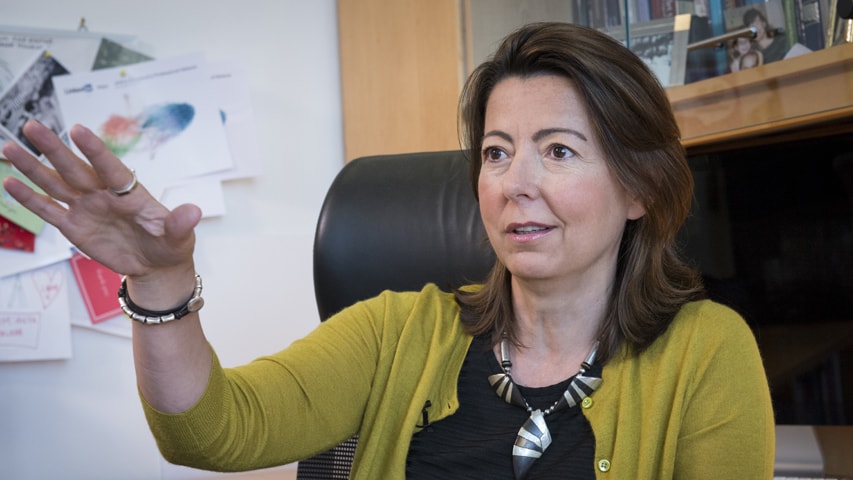Q&A: Jelena Kovačević, Hamerschlag University Professor

It’s no coincidence that women make up about 44 percent of the Carnegie Mellon University College of Engineering’s first-year undergraduate class this fall.
In a recent interview, Jelena Kovačević, the Hamerschlag University Professor and head of the Electrical and Computer Engineering (ECE) Department at CMU, said that department and college leaders have put in a concerted effort to diversify the program, conduct outreach, foster a collaborative culture and support students once they arrive on campus.
Following are edited excerpts from the interview:
Q: How has ECE and the College of Engineering increased the number of female undergraduates enrolled at CMU?
A: In the Electrical and Computer Engineering Department at Carnegie Mellon, we have looked at an overall strategy to diversify our environment. It’s really important to understand that you can’t do anything in isolation, so we look at it at all levels: from middle school and high school to when they come on campus to visit, to admissions and once they enroll, to diversifying faculty ranks.
So we start from outreach. We have regular programs like SPARK Saturdays where high-school students come four Saturdays throughout the semester and do an ECE lab experience in our undergrad labs; we have others as well and plan on instituting even more.
When students come to visit, how do we explain to them what we do, what ECE is all about and what impact we make on society? Once student enroll, how do we make sure the environment is such so they thrive?
So at each one of these levels, we look at how we can diversify our environment to attract more women to CMU.
Let me illustrate this with some of the specific items we did. It is well known that women are attracted to work that has impact on society. And we have plenty of that in electrical and computer engineering, from our work on data and network science, to Internet of Things, security and privacy, storage, computing, smart infrastructure — we have myriad of choices.
So we made a concentrated effort to showcase our strategic research thrusts and their impact through position papers that are accessible to lay people.
Q: What makes the ECE culture at CMU different from ECE programs around the country?
A: One of the things that Carnegie Mellon is known for is this deep immersion in a collaborative culture. What that feels like is pure excitement; excitement about our research, excitement that it matters, excitement that we all do it together, students, faculty and staff. That’s what makes us unique.
Q: How are students supported once they arrive on Carnegie Mellon’s campus?
A: One big piece of the puzzle … is exactly that: how to support students once they’re here. It’s not only enough to bring them here, they need to feel like a part of a community once they are here and we need to provide them with tools so they can thrive.
We have an organization for women in ECE called WinECE that has been a key partner in helping us in our efforts. From, for example, giving cookies and a hug after a final to pairing younger undergrads with … senior undergraduate students or even master’s degree and Ph.D. students to help them with mentoring and getting through tough times.
… We have also started pairing our undergraduate women with our female alums. That helps with career advice, with networking, with mentoring and basically building the support system for after they graduate, as well.
… Additionally, we have made, again, a concentrated effort to increase contact students have with faculty, especially in non-classroom settings so they have a feeling that we are people, too, and we can have fun. This is supported by research especially at critical stages and for underrepresented groups. To give you an example, I hosted two puzzle nights with dinner; we all loved it. Took us four hours because it was 1,000 pieces. Students were passing by on their way from the labs in the evening and would stop by to put in a few pieces. It was really a fun thing to do.